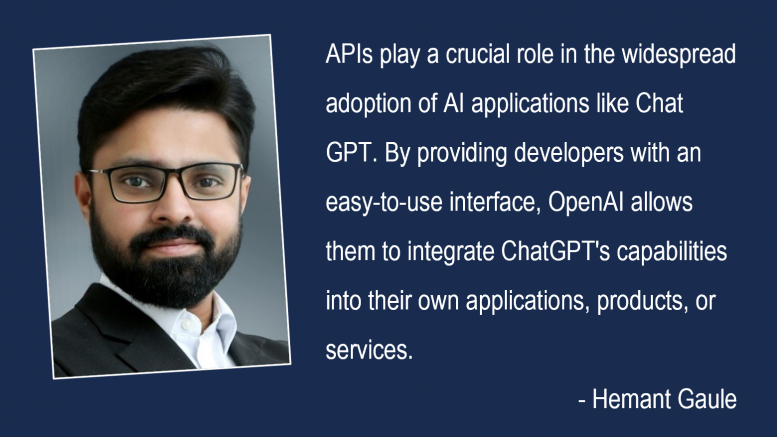The day is 24 March, 2023. More has happened in the last 10 days in the world of AI than it had in the 6 months preceding today, particularly when it comes to its utility to the layperson.
Let’s rewind just last week.
- On Monday, Stanford university launched Alpaca, a GPT-like model, which is much “lighter” than GPT or any other similar models. Meaning it will become easier for people to train this model and use it to create ChatGPT like services specifically for their own needs, on your own computer, essentially taking a huge jump in democratising GPT-like models.
- On Tuesday, Google announced that it will be releasing GPT-like functionality in their Workspace tools, possibly making several AI based companies obsolete, which work on bringing AI capabilities to Google products. So you could instruct that GPT to create a presentation on Google Slides by combining a certain email on Google, another Google doc, and a Google Spreadsheet. Also on Tuesday, GPT 4 was launched, taking perhaps the biggest jump in AI applications so far, expanding the abilities of ChatGPT and its API.
- On Wednesday, Midjourney, one of the world’s leading AI platforms for creating images from text launched its version 5 – Midjourney 5, improving not only its image generation capabilities but also the way you prompt how to create them.
- On Thursday, Microsoft announced Microsoft 365 Copilot, a tool like the tool by Google, integrating AI based GPT like capabilities across Microsoft services. Also on Thursday, ChatGPT rival made by Baidu, called Ernie, was launched to an underwhelming response.
- This week, Google rolled out BARD, its own version of ChatGPT, in Beta mode to select users. The response to this was underwhelming as well.
- This morning OpenAI announced plugins to add real time data and workflow to ChatGPT. From browsing real time data to integrating third party services as plugins, these will be the next giant step in bringing AI to your computers and phones.
All this to say that this has perhaps been the craziest week in AI. But why now? Why this sudden boom of announcements of tools across an insane spectrum of real world applications, which are also incredibly user friendly?
The reason is how OpenAI has made available its AI model GPT – as a Chat interface for everyone and as APIs for programmers who can build solutions on it. Open AI has not just democratised access to AI, but done so for perhaps the most advanced AI model there is. Here’s a look at what it is and what it does.
What is GPT?
The Generative Pre-trained Transformer (GPT) is an advanced language model that can understand and generate human-like text based on given context. It excels at tasks like natural language processing, text completion, summarisation, translation, and question-answering. By learning from vast amounts of data, GPT can recognise patterns, comprehend context, and generate coherent and contextually relevant responses or text, making it valuable for applications such as chatbots, virtual assistants, content creation, and more.
ChatGPT, a variant of GPT, is specifically designed for generating conversational responses in a Chat window. Building upon GPT’s ability to understand and generate human-like text, ChatGPT focuses on producing contextually relevant and coherent replies in a conversational setting. This makes it particularly useful for applications like chatbots, virtual assistants, and other interactive AI systems where engaging and natural conversation is essential.
How was it built?
GPT was built using a two-step process, the model first undergoes pre-training on a large dataset to learn language patterns, and then fine-tuning on a smaller dataset with human AI trainers to refine its conversational abilities. A typical machine learning algorithm learns through a reward system; better answers mean higher rewards. After several iterations, it learns to identify the best possible outcomes for a given instructions. Understanding this reward system is crucial to knowing the limitations of AI in general and GPT specifically. Because it is rewarded when it produces responses, it will produce responses even when it is incapable of doing so – leading to inaccurate or non-existent information.
Why OpenAI’s API access are transformative?
APIs play a crucial role in the widespread adoption of AI applications like Chat GPT. By providing developers with an easy-to-use interface, OpenAI allows them to integrate ChatGPT’s capabilities into their own applications, products, or services. This accessibility helps democratise advanced AI capabilities, paving the way for innovative AI-driven solutions across various industries.
And this is where the real applications of AI will emerge. Developers across the world are using its API to create features that address some very specific needs – from extensions that bring GPT capabilities to your browser or Google spreadsheets, to apps that can run on your phones. Earlier this week, Air India announced that it will use the GPT4 platform to train a chatbot to answer customer queries. This not only has implications on how we transact among each other or with brands, but also on organisations that have been building and selling services off their own AI platforms, potentially making them obsolete if OpenAI’s GPT can provide those services as well.
What’s next?
We’ve gone from “here are a few things that AI can help you do” to “your imagination is your only limit of what AI can do.” the real test of how people use ai tools will be through how quickly they can identify the right tool for them, and how good they are in instructing the ai to produce results for them.
In the next post in this series, i will reveal some best practices of getting the most out of ai for a range of applications.
The views and opinions published here belong to the author and do not necessarily reflect the views and opinions of the publisher.



Be the first to comment on "The craziest month in AI"